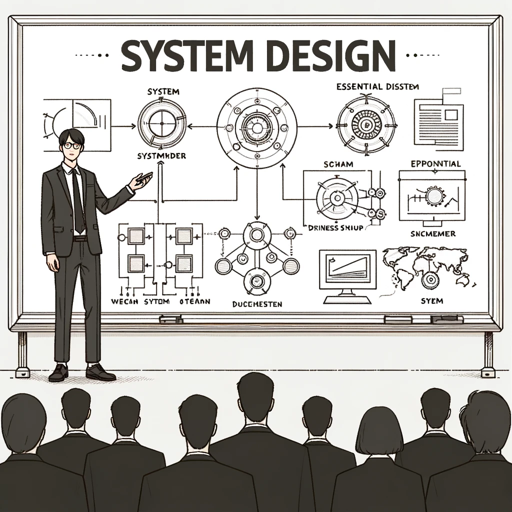VLSI and ASIC Design-VLSI and ASIC design platform
AI-powered VLSI and ASIC design assistant.
How do I optimize my VLSI design for low power?
Can you explain the ASIC design flow?
What are the key considerations for tape-out in digital technology?
How does analog circuit design differ from digital?
Related Tools
Load More
System Design GPT
This GPT will help you ace your system design interview

FPGA and Verilog Expert
Expert in FPGA workings, Xilinx 7 series, and Verilog HDL

Electronics Hardware Design GPT
Expert in electronics and hardware design, circuit and PCB guidance

Digital Logic Design Tutor
Tutor for Digital Logic Design, offering detailed explanations and online research.

RTL GPT
Expert in Hardware Design and Verification

电路分析设计师
Expert in electrical circuit analysis and design, providing detailed explanations.
20.0 / 5 (200 votes)
Introduction to VLSI and ASIC Design
VLSI (Very Large Scale Integration) and ASIC (Application-Specific Integrated Circuit) design are crucial fields in modern semiconductor technology. VLSI refers to the process of integrating hundreds of thousands to millions of transistors on a single chip, allowing complex functionalities to be embedded within small, power-efficient packages. ASIC design focuses on creating custom chips tailored to specific applications, offering optimized performance for particular tasks. The primary purpose of these designs is to meet the growing demand for higher processing power, lower energy consumption, and specialized functionality in a variety of devices. For example, in a smartphone, VLSI design enables the integration of multiple functions such as processing, memory, and signal conversion on a single chip, minimizing space and power usage. ASICs are often used in applications like cryptocurrency mining, where a chip is designed specifically to perform the repetitive calculations involved in blockchain algorithms efficiently. VLSI and ASIC design are pivotal in creating high-performance, application-specific hardware, driving advancements in fields ranging from consumer electronics to telecommunications, automotive, and beyond.

Main Functions of VLSI and ASIC Design
Custom Integrated Circuit Design
Example
Developing an ASIC for a wireless communication system
Scenario
In designing a wireless communication chip, the goal might be to optimize data throughput and minimize power consumption. VLSI design techniques allow the integration of various subsystems like the baseband processor, RF transceiver, and power management unit into a single chip. An ASIC design would further customize this chip to meet the exact specifications of a specific communication standard, such as LTE or 5G, offering tailored performance benefits such as reduced latency and extended battery life in mobile devices.
Design Verification and Validation
Example
Formal verification of a microprocessor's arithmetic logic unit (ALU)
Scenario
Before manufacturing a microprocessor, it’s crucial to ensure that the design functions correctly under all possible conditions. Design verification involves extensive simulation and formal methods to prove that the design meets its specifications. For example, the ALU, a critical component in a CPU, must be verified to perform arithmetic operations like addition, subtraction, and logical functions accurately. VLSI design tools enable comprehensive testing, ensuring that any logical errors are detected and corrected before the chip goes into production.
Low-Power Design Techniques
Example
Implementing power gating in a battery-operated IoT device
Scenario
In battery-powered devices like IoT sensors, power efficiency is paramount. VLSI design includes techniques such as power gating, where parts of a chip are turned off when not in use to save energy. For instance, in a wearable fitness tracker, the processor can be designed to enter a low-power sleep mode when the device is idle, significantly extending battery life while maintaining functionality. ASICs further refine these techniques, allowing for extremely efficient power management tailored to the specific use case of the device.
Ideal Users of VLSI and ASIC Design Services
Semiconductor Companies
These companies specialize in the development and manufacturing of integrated circuits (ICs) and are primary users of VLSI and ASIC design services. They benefit from custom chip designs tailored to their specific market needs, enabling them to create competitive, high-performance products. For example, a semiconductor company might use these services to develop a new GPU for gaming applications, focusing on high computational power and energy efficiency.
Consumer Electronics Manufacturers
Manufacturers of devices such as smartphones, tablets, and wearable technology rely heavily on VLSI and ASIC design to integrate complex functionalities into compact, power-efficient chips. These users benefit from the ability to create differentiated products with unique features, such as advanced camera systems or AI processing units, which are essential for maintaining a competitive edge in the fast-paced consumer electronics market.

Guidelines for Using VLSI and ASIC Design
Step 1
Visit aichatonline.org for a free trial without the need for login or ChatGPT Plus.
Step 2
Familiarize yourself with basic concepts of VLSI (Very-Large-Scale Integration) and ASIC (Application-Specific Integrated Circuit) design. Having a solid understanding of digital logic design, semiconductor physics, and CAD tools is essential.
Step 3
Identify your use case—whether it's for academic research, industry project, or prototyping. This will guide the design tools and methodologies you’ll use within the platform.
Step 4
Engage with the platform's resources, including tutorials, technical documentation, and design libraries. Utilize these materials to refine your design process and optimize your chip layouts.
Step 5
Regularly test and validate your designs using the platform’s simulation tools. Ensure that your design meets the required specifications and performance criteria before moving on to tape-out or final implementation.
Try other advanced and practical GPTs
Dork Genius
AI-powered Google search optimization

Mr Simplified Chinese (for English Speakers) 🐉
AI-powered Simplified Chinese translator

Taquígrafo RX
AI-powered Radiology Report Perfection

Fluid Mechanics Tutor
AI-powered assistance for fluid mechanics.

Fluid Dynamics Expert
AI-powered Aerospace Fluid Dynamics Guide

English Writing Evaluator & Refiner
AI-powered tool for refining English writing

Econometrics GPT
AI-powered Econometrics Insights

Econometric Analyst
AI-powered econometric analysis made simple.

EdTech Buddy
AI-powered tool for smarter education

Prompt Engineer (Build Prompts)
Enhance AI interactions with precise prompts

Astro GPT
AI-powered astrology for personalized insights

Real Estate Attorney
AI-Powered Legal Guidance for Real Estate

- Education
- Optimization
- Prototyping
- Simulation
- Verification
VLSI and ASIC Design Q&A
What prerequisites are needed to effectively use VLSI and ASIC Design tools?
To effectively use VLSI and ASIC Design tools, a foundational understanding of digital logic design, semiconductor physics, and familiarity with CAD tools is crucial. Knowledge of HDL languages like Verilog or VHDL is also beneficial.
How does this tool support industry-specific ASIC projects?
The platform offers advanced design and simulation tools tailored for industry-specific ASIC projects, allowing users to prototype, optimize, and validate designs efficiently. It supports various technology nodes and integrates with popular EDA tools for a seamless workflow.
Can this platform be used for educational purposes?
Yes, the platform is highly suitable for educational purposes, offering resources like tutorials, design examples, and simulation tools that are perfect for teaching and learning VLSI and ASIC design principles.
What are the common challenges users face when using this tool?
Common challenges include managing design complexity, ensuring power efficiency, and meeting timing constraints. However, the platform provides extensive support and documentation to help users overcome these hurdles.
How can I optimize my design process using this platform?
To optimize your design process, utilize the platform’s extensive libraries, automate repetitive tasks using scripts, and regularly run simulations to catch errors early. Engaging with community forums can also provide valuable insights and tips.